Multi-Element UWB Probe Optimization for Medical Microwave Imaging
Abstract
:1. Introduction
- Multi-static antenna systems, which are based on using a large number of probes to illuminate the body parts under study, such as the system described in [4] that was developed for brain stroke detection based on 32 or 64 transceivers at 1 GHz. A total of 10 or 12 patch antennas are mounted on a helmet [5] enabling differentiation between hemorrhagic and acute stroke patients, as well as hemorrhagic from healthy volunteers. A system has recently been developed based on an array of 24 printed monopole antennas placed conformally to the upper part of the head [6,7]. Other systems have been developed for breast cancer detection based on the contrast between healthy and malignant tissue. In [8], a more comfortable system of 16 flexible antenna embedded in a bra for a frequency band from 2 GHz to 4 GHz was developed. Subsequently, a hand-held impulse radar detector was developed for the detection of breast tumors [9] using 16 antennas for a frequency range of 3.1 GHz to 10.6 GHz. In [10], a mm-wave imaging prototype was presented for early breast cancer detection based on a synthetic array of 24 probes, achieved by translating two antennas. The system was used to locate a neoplastic cylindrical model at different depths inside the phantom up to 3 cm using a frequency band of 18 Ghz to 40 Ghz. Other parts of the human body were also investigated, such as the forearm [11], knee [12], skin [13], etc.
- Monostatic systems based on a single rotating antenna around the body part that transmits and receives signals to increase the number of scanning angles. This technique has been used for brain imaging [14] to detect intracranial hemorrhage using a single compact UWB antenna with a frequency band of 0.75 GHz to 2.55 GHz. Additionally, traumatic brain injuries were investigated in [15], with a system based on a fixed antenna that illuminates a rotating head model for a frequency band of 1.1 GHz to 3.4 GHz. In [16], the breast was investigated using a system in which the antenna is attached to a robotic arm that rotates and moves in a vertical axis to allow the reconstruction of 3D images for a frequency band from 2.5 GHz to 15 GHz.
2. Optimal Distribution of Antennas for the Proposed Cylindrical MWI System
3. Numerical and Experimental Optimization of the Proposed System
4. Conclusions
Author Contributions
Funding
Institutional Review Board Statement
Data Availability Statement
Conflicts of Interest
References
- Nikolova, N.K. Microwave imaging for breast cancer. IEEE Microw. Mag. 2011, 12, 78–94. [Google Scholar] [CrossRef]
- O’Loughlin, D.; O’Halloran, M.; Moloney, B.M.; Glavin, M.; Jones, E.; Elahi, M.A. Microwave breast imaging: Clinical advances and remaining challenges. IEEE Trans. Biomed. Eng. 2018, 65, 2580–2590. [Google Scholar] [CrossRef]
- Lin, J.C.; Clarke, M.J. Microwave imaging of cerebral edema. Proc. IEEE 1982, 70, 523–524. [Google Scholar] [CrossRef]
- Semenov, S.Y.; Corfield, D.R. Microwave tomography for brain imaging: Feasibility assessment for stroke detection. Int. J. Antennas Propag. 2008, 2008, 254830. [Google Scholar] [CrossRef] [Green Version]
- Persson, M.; Fhager, A.; Trefná, H.D.; Yu, Y.; McKelvey, T.; Pegenius, G.; Karlsson, J.E.; Elam, M. Microwave-based stroke diagnosis making global prehospital thrombolytic treatment possible. IEEE Trans. Biomed. Eng. 2014, 61, 2806–2817. [Google Scholar] [CrossRef] [PubMed] [Green Version]
- Rodriguez-Duarte, D.O.; Vasquez, J.A.T.; Scapaticci, R.; Crocco, L.; Vipiana, F. Assessing a Microwave Imaging System for Brain Stroke Monitoring via High Fidelity Numerical Modelling. IEEE J. Electromagn. RF Microw. Med. Biol. 2021, 5, 238–245. [Google Scholar] [CrossRef]
- Tobon Vasquez, J.A.; Rodriguez-Duarte, D.O.; Origlia, C.; Turvani, G.; Scapaticci, R.; Casu, M.R.; Crocco, L.; Vipiana, F. Microwave Imaging Device Prototype for Brain Stroke 3D Monitoring. In Proceedings of the 2022 International Workshop on Antenna Technology (iWAT), Dublin, Ireland, 16–18 May 2022; pp. 200–202. [Google Scholar] [CrossRef]
- Porter, E.; Bahrami, H.; Santorelli, A.; Gosselin, B.; Rusch, L.A.; Popović, M. A wearable microwave antenna array for time-domain breast tumor screening. IEEE Trans. Med. Imaging 2016, 35, 1501–1509. [Google Scholar] [CrossRef] [PubMed] [Green Version]
- Song, H.; Sasada, S.; Kadoya, T.; Okada, M.; Arihiro, K.; Xiao, X.; Kikkawa, T. Detectability of breast tumor by a hand-held impulse-radar detector: Performance evaluation and pilot clinical study. Sci. Rep. 2017, 7, 16353. [Google Scholar] [CrossRef] [PubMed] [Green Version]
- Di Meo, S.; Matrone, G.; Pasian, M. Experimental validation on tissue-mimicking phantoms of millimeter-wave imaging for breast cancer detection. Appl. Sci. 2021, 11, 432. [Google Scholar] [CrossRef]
- Gilmore, C.; Zakaria, A.; Pistorius, S.; LoVetri, J. Microwave imaging of human forearms: Pilot study and image enhancement. Int. J. Biomed. Imaging 2013, 2013, 19. [Google Scholar] [CrossRef] [PubMed] [Green Version]
- Sultan, K.S.; Abbosh, A.M. Wearable Dual Polarized Electromagnetic Knee Imaging System. IEEE Trans. Biomed. Circuits Syst. 2022, 16, 296–311. [Google Scholar] [CrossRef] [PubMed]
- Chand, K.; Mehta, P.; Beetner, D.G.; Zoughi, R.; Stoecker, W.V. Microwave reflectometry as a novel diagnostic method for detection of skin cancers. In Proceedings of the 2005 IEEE Instrumentationand Measurement Technology Conference Proceedings, Ottawa, ON, Canada, 17–19 May 2005; Volume 2, pp. 1425–1428. [Google Scholar]
- Mobashsher, A.T.; Mahmoud, A.; Abbosh, A. Portable wideband microwave imaging system for intracranial hemorrhage detection using improved back-projection algorithm with model of effective head permittivity. Sci. Rep. 2016, 6, 20459. [Google Scholar] [CrossRef] [PubMed] [Green Version]
- Mobashsher, A.T.; Abbosh, A.M.; Wang, Y. Microwave System to Detect Traumatic Brain Injuries Using Compact Unidirectional Antenna and Wideband Transceiver With Verification on Realistic Head Phantom. IEEE Trans. Microw. Theory Tech. 2014, 62, 1826–1836. [Google Scholar] [CrossRef]
- Fear, E.C.; Bourqui, J.; Curtis, C.; Mew, D.; Docktor, B.; Romano, C. Microwave breast imaging with a monostatic radar-based system: A study of application to patients. IEEE Trans. Microw. Theory Tech. 2013, 61, 2119–2128. [Google Scholar] [CrossRef]
- Jofre, L.; Broquetas, A.; Romeu, J.; Blanch, S.; Toda, A.P.; Fabregas, X.; Cardama, A. UWB tomographic radar imaging of penetrable and impenetrable objects. Proc. IEEE 2009, 97, 451–464. [Google Scholar] [CrossRef]
- Aznar, Á.C.; Robert, J.R.; Casals, J.M.R.; Roca, L.J.; Boris, S.B.; Bataller, M.F. Antenas; Universitat Politecnica de Catalunya: Barcelona, Spain, 2004. [Google Scholar]
- Lee, J.h.; Hwang Shin, S.J.; Istook, C.L. Analysis of human head shapes in the united states. Int. J. Hum. Ecol. 2006, 7, 77–83. [Google Scholar]
- Rashid, S.; Jofre, L.; Garrido, A.; Gonzalez, G.; Ding, Y.; Aguasca, A.; O’Callaghan, J.; Romeu, J. 3-D Printed UWB Microwave Bodyscope for Biomedical Measurements. IEEE Antennas Wirel. Propag. Lett. 2019, 18, 626–630. [Google Scholar] [CrossRef] [Green Version]
- Mohammed, B.J.; Abbosh, A.M. Realistic head phantom to test microwave systems for brain imaging. Microw. Opt. Technol. Lett. 2014, 56, 979–982. [Google Scholar] [CrossRef]

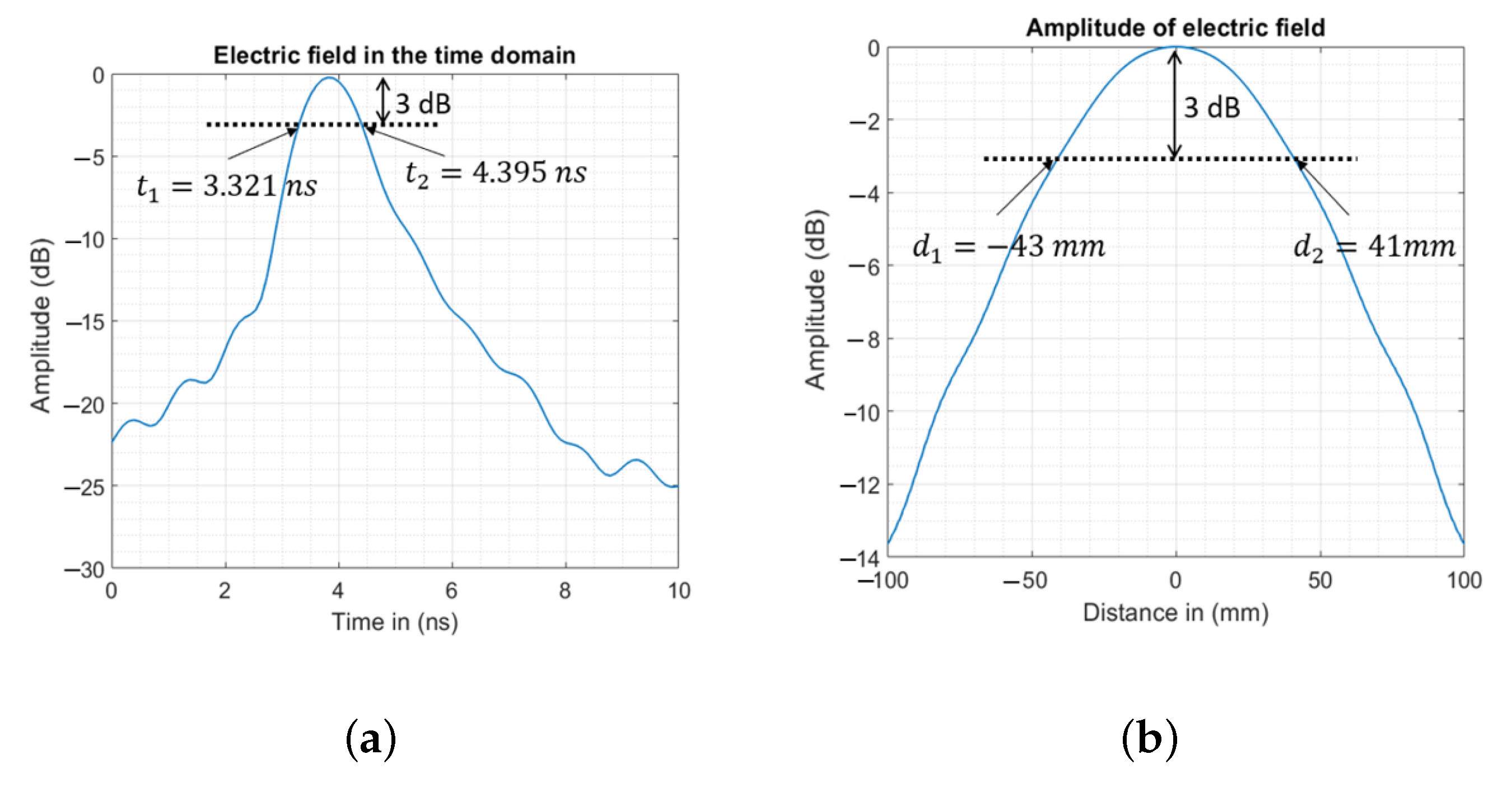
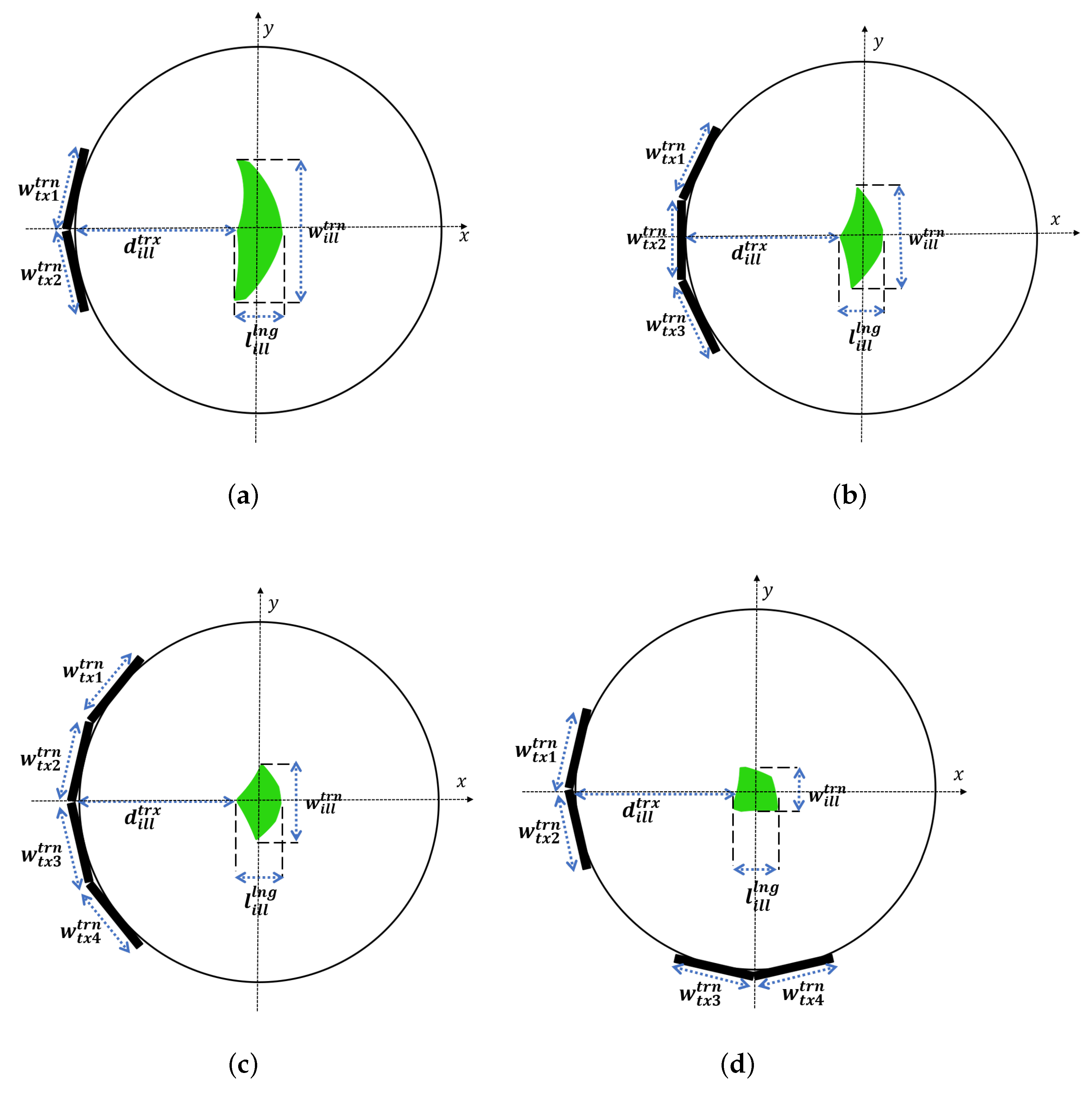

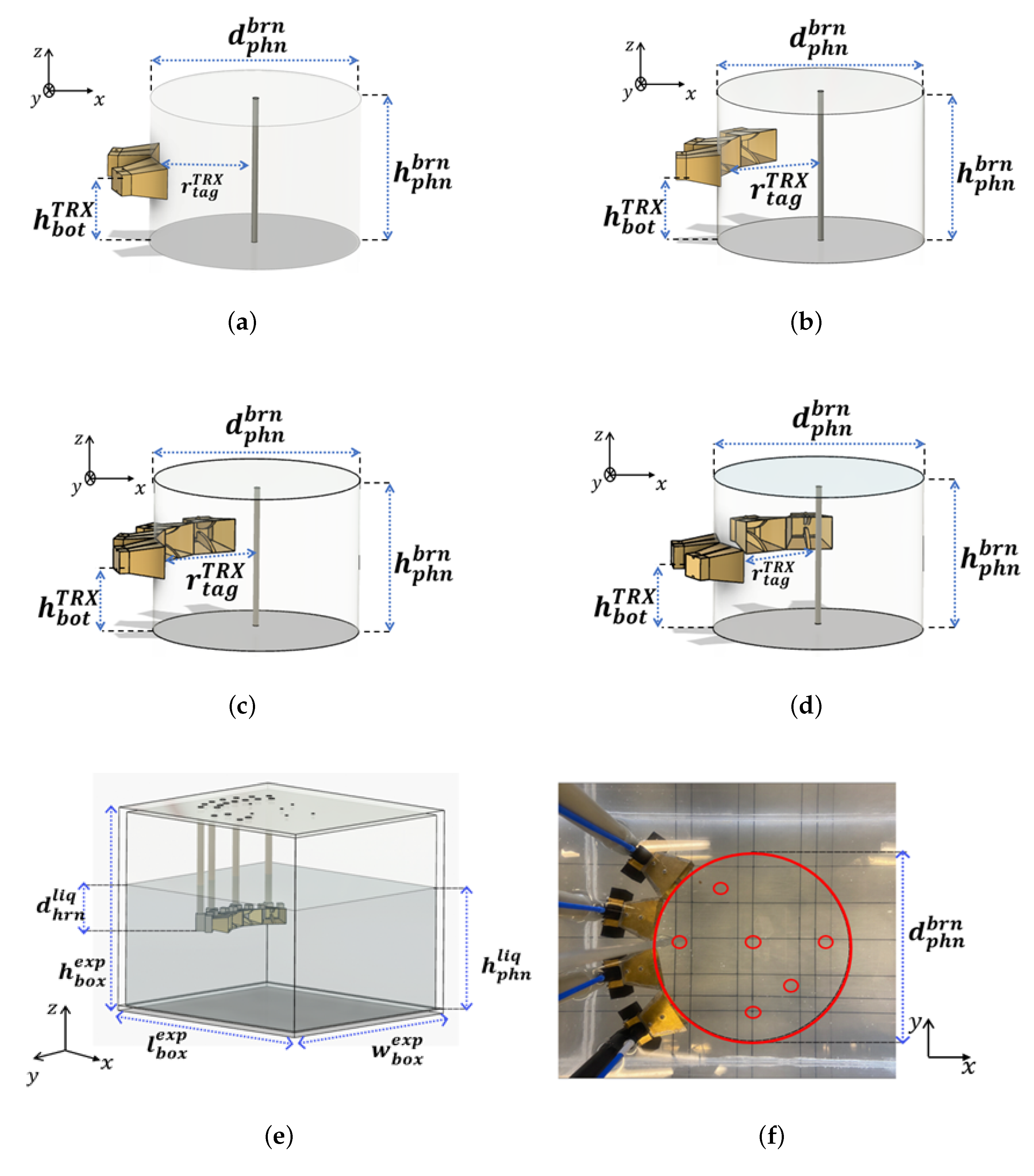
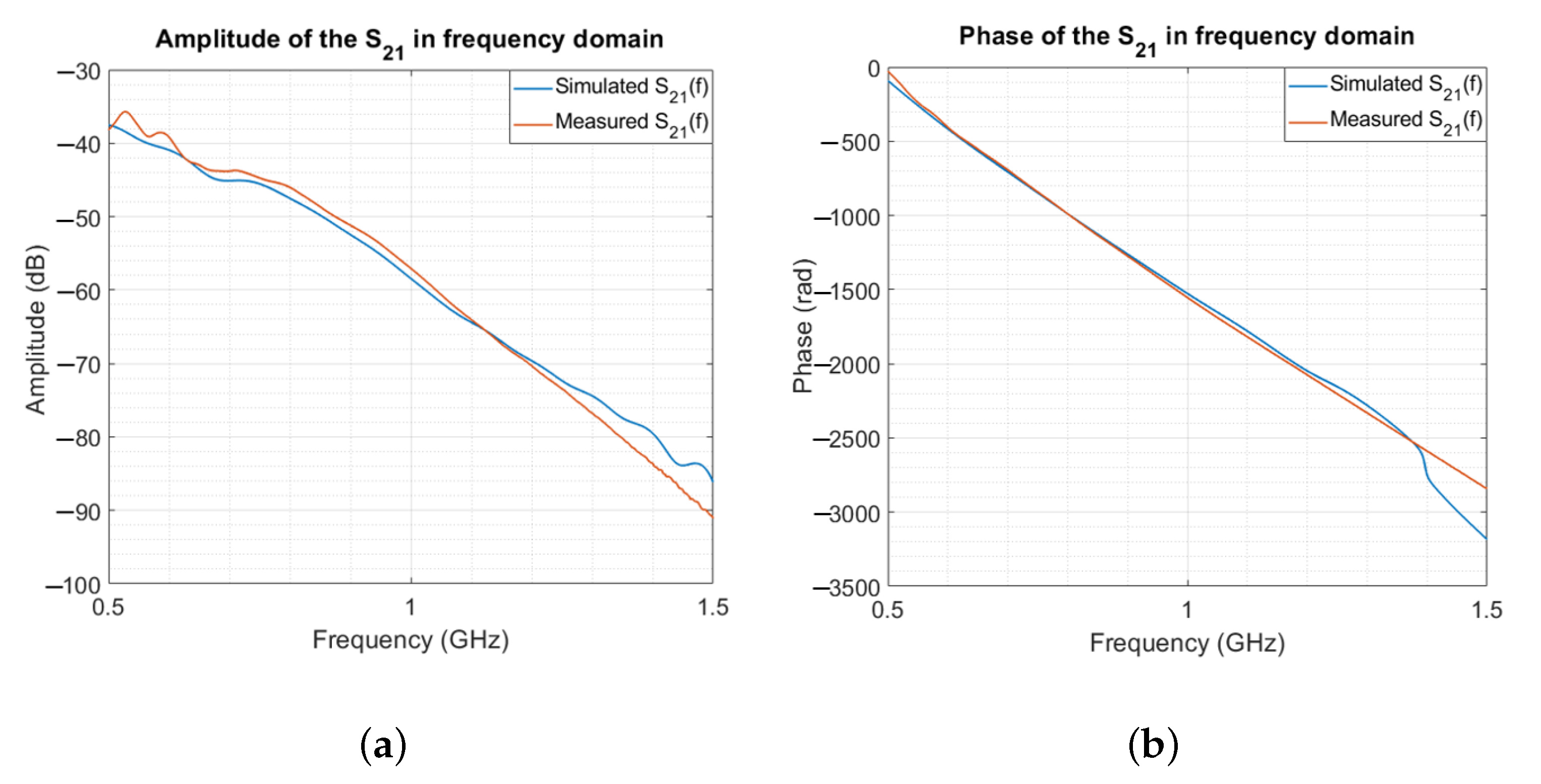

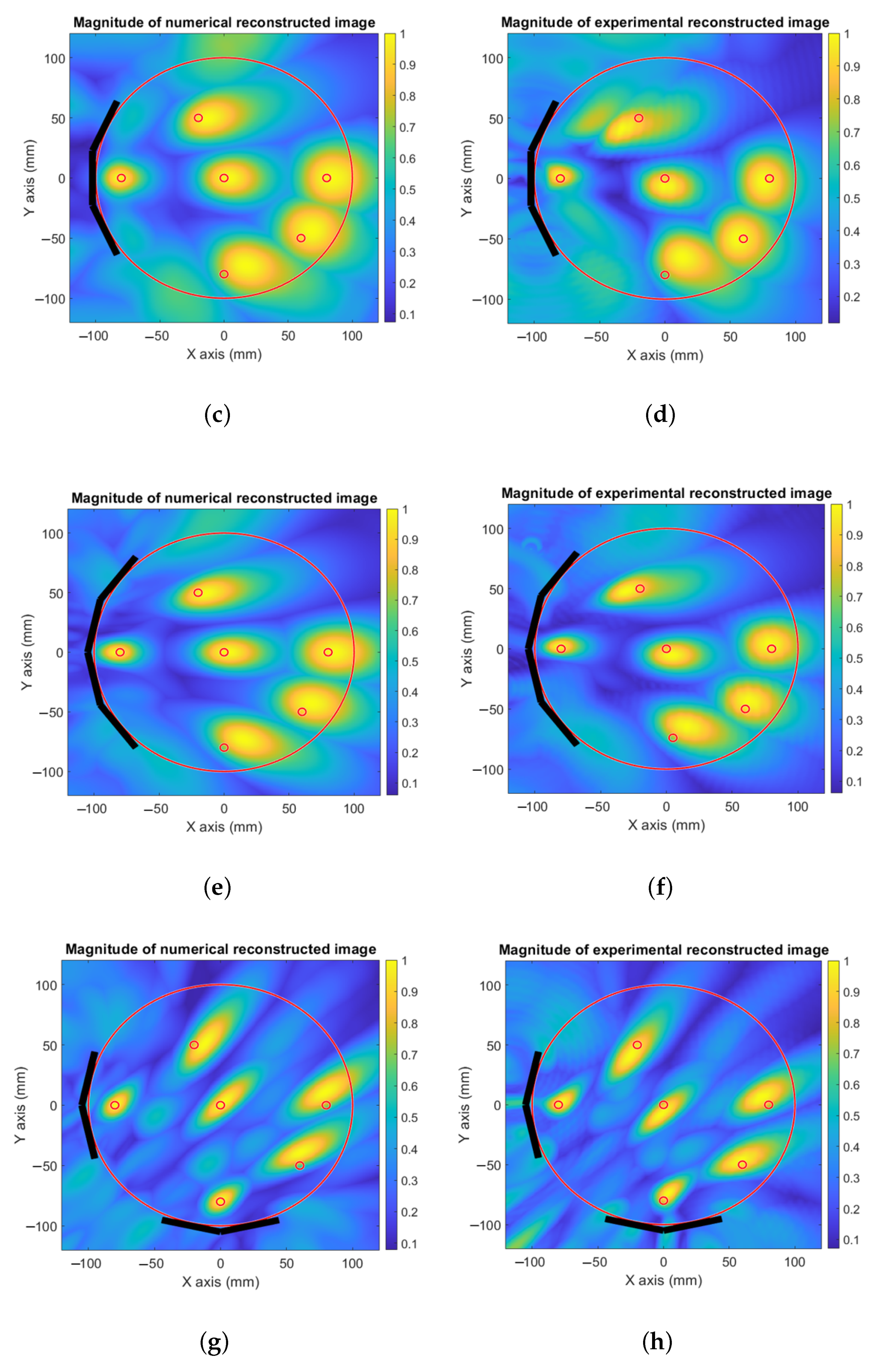
| in mm | in mm | |
|---|---|---|
| Analytical | 88.3 | 39.7 |
| Numerical | 84.0 | 42.7 |
Disclaimer/Publisher’s Note: The statements, opinions and data contained in all publications are solely those of the individual author(s) and contributor(s) and not of MDPI and/or the editor(s). MDPI and/or the editor(s) disclaim responsibility for any injury to people or property resulting from any ideas, methods, instructions or products referred to in the content. |
© 2022 by the authors. Licensee MDPI, Basel, Switzerland. This article is an open access article distributed under the terms and conditions of the Creative Commons Attribution (CC BY) license (https://creativecommons.org/licenses/by/4.0/).
Share and Cite
Akazzim, Y.; El Mrabet, O.; Romeu, J.; Jofre-Roca, L. Multi-Element UWB Probe Optimization for Medical Microwave Imaging. Sensors 2023, 23, 271. https://doi.org/10.3390/s23010271
Akazzim Y, El Mrabet O, Romeu J, Jofre-Roca L. Multi-Element UWB Probe Optimization for Medical Microwave Imaging. Sensors. 2023; 23(1):271. https://doi.org/10.3390/s23010271
Chicago/Turabian StyleAkazzim, Youness, Otman El Mrabet, Jordi Romeu, and Luis Jofre-Roca. 2023. "Multi-Element UWB Probe Optimization for Medical Microwave Imaging" Sensors 23, no. 1: 271. https://doi.org/10.3390/s23010271






